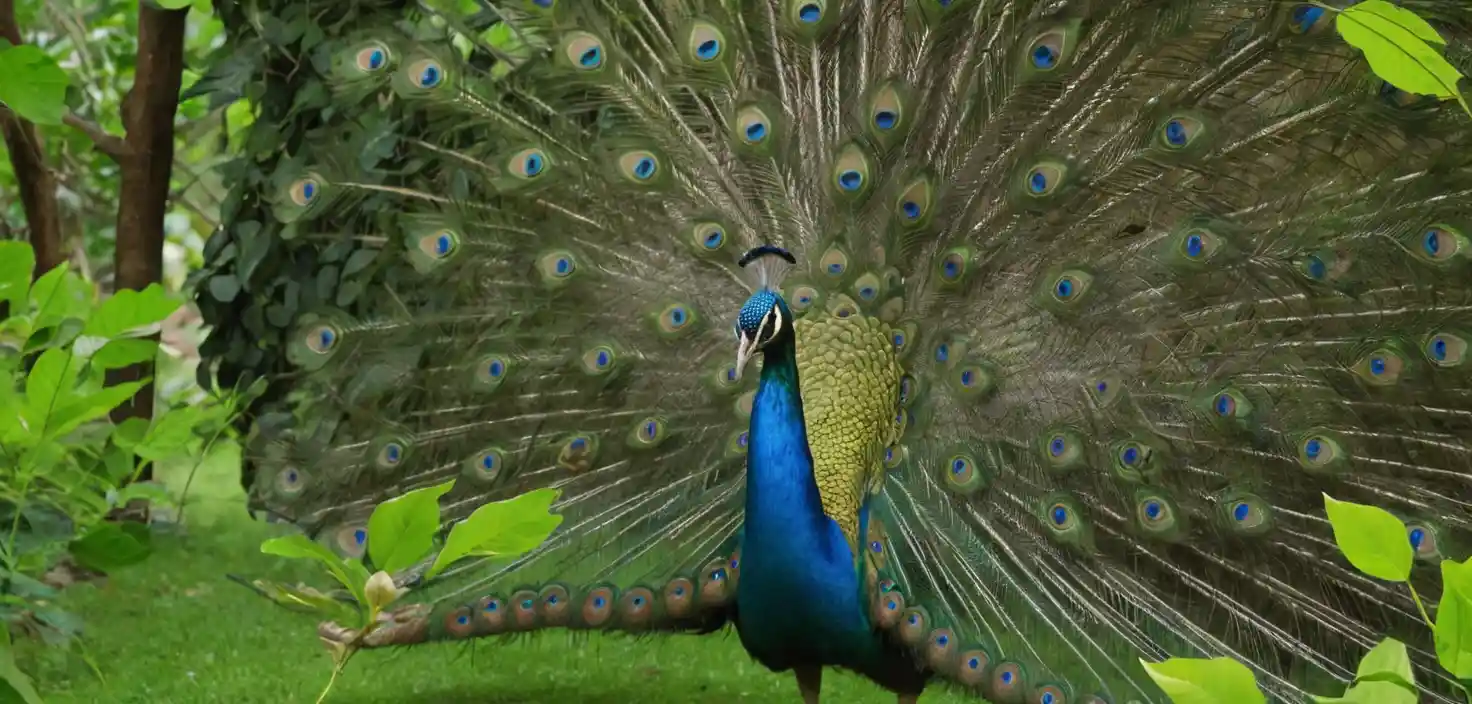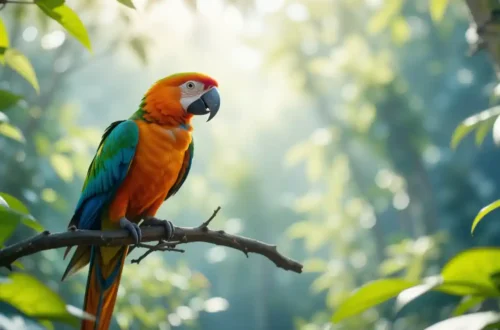Jim Corbett National Park, located in the foothills of the Himalayas in Uttarakhand, India, is a sanctuary teeming with biodiversity. While the park is famous for its Bengal tigers, it is equally renowned for its Jim Corbett National Park birds—a vast collection of over 600 species that attract birdwatchers and nature enthusiasts from across the world. The park’s varied ecosystems, from dense Sal forests and riverbanks to open grasslands, create the perfect habitat for a diverse range of bird species.
Whether you’re a professional ornithologist or an amateur bird lover, Jim Corbett National Park birds offer an unforgettable experience. From vibrant resident species to seasonal migratory visitors, this park is a must-visit destination for birdwatching in India.
Exploring the Rich Avifauna of Jim Corbett National Park
Jim Corbett National Park Birds: A Diverse Range
The beauty of Jim Corbett National Park birds lies in their incredible diversity. The park’s unique topography, climate, and vegetation provide a thriving environment for both terrestrial and aquatic birds.
The avifauna here includes a mix of:
- Forest Birds – Species like the Indian Peafowl, Red Junglefowl, and Great Hornbill are commonly seen within the park’s dense forested regions.
- Wetland Birds – The park’s many riverine areas and marshes attract birds such as the Black-necked Stork and Woolly-necked Stork.
- Raptors (Birds of Prey) – Several majestic raptors, including the Changeable Hawk-Eagle, Crested Serpent Eagle, and Osprey, can be spotted soaring over the treetops.
- Migratory Birds – During the winter months, the park transforms into a hub for migratory birds, with species like the Bar-headed Goose and Eurasian Wigeon flocking to its wetlands.
Birdwatching in Jim Corbett National Park
Birdwatching is one of the most sought-after activities in Jim Corbett National Park, offering a tranquil experience in the heart of nature. The park has designated birding trails that provide excellent opportunities to spot some of the most fascinating Jim Corbett National Park birds in their natural habitat.
Best Birdwatching Zones in Jim Corbett National Park
If you’re planning a birdwatching tour, here are some of the best zones for spotting different species of Jim Corbett National Park birds:
- Dhikala Zone – The most famous part of the park, rich in both wildlife and bird species. Best for spotting eagles, owls, and storks.
- Bijrani Zone – Known for its mix of grasslands and forests, perfect for observing jungle birds like partridges, pheasants, and flycatchers.
- Jhirna Zone – Ideal for birdwatching year-round, with a high chance of spotting species like the White-rumped Vulture and Chestnut-headed Bee-eater.
- Sitabani Forest Reserve – A great place for spotting Himalayan species such as the Steppe Eagle and Grey-headed Fish Eagle.
Popular Jim Corbett National Park Birds
Resident Birds (Found Throughout the Year)
These species are permanent residents of Jim Corbett National Park and can be seen in various habitats across the reserve:
- Indian Peafowl – Famous for its dazzling display, this bird is commonly seen in the park’s open fields and near forest edges.
- Red Junglefowl – The wild ancestor of domestic chickens, these birds can be spotted foraging on the forest floor.
- Crested Kingfisher – A striking bird often found along riverbanks, diving for fish.
- Great Hornbill – A majestic species that thrives in the park’s tall forests, recognized by its large yellow casque.
Migratory Birds (Seasonal Visitors in Winter)
During the winter months, Jim Corbett National Park birds include a variety of migratory species that travel thousands of kilometers to escape harsh winters in their native habitats:

- Bar-headed Goose – A high-altitude migratory species that flies over the Himalayas to reach India.
- Eurasian Wigeon – Frequently seen in the park’s wetlands, these ducks arrive in large flocks.
- Steppe Eagle – A powerful raptor that migrates from Central Asia to spend the winter in India.
- Pallas’s Fish Eagle – A near-threatened species often seen around the Ramganga Reservoir.
Conservation Efforts for Jim Corbett National Park Birds
To ensure the long-term survival of Jim Corbett National Park birds, various conservation measures have been implemented:
- Habitat Preservation: Strict regulations protect the park’s forests, wetlands, and grasslands from encroachment.
- Anti-Poaching Measures: Conservation programs actively monitor and prevent illegal hunting and trapping of birds.
- Research & Monitoring: Regular bird surveys are conducted to assess population trends and habitat conditions.
- Sustainable Tourism: Guidelines are in place to ensure that birdwatching activities do not disturb the natural behavior of the birds.
Visitors are encouraged to follow ethical birdwatching practices by maintaining silence, avoiding flash photography, and staying on designated trails.
Best Time to Visit Jim Corbett National Park for Birdwatching
The best months for birdwatching in Jim Corbett National Park are November to February, when the weather is pleasant and migratory birds have arrived. During this period, the mornings are crisp, and the park’s wetlands and forests are teeming with avian activity.
For those who prefer warmer weather, March to May is also a good time to visit, as many resident birds are actively breeding and displaying their vibrant plumage.
Tips for Birdwatching in Jim Corbett National Park
If you’re planning to explore the incredible world of Jim Corbett National Park birds, here are some essential tips to enhance your experience:
- Start Early in the Morning – Most bird species are highly active at dawn. Arriving early increases your chances of spotting rare species.
- Carry a Good Pair of Binoculars – A 10×42 binocular is recommended for birdwatching, allowing you to see details from a distance.
- Use a Field Guide or App – Carry a bird identification book or use mobile apps like eBird or Merlin Bird ID to recognize species.
- Wear Earth-Toned Clothing – Birds are sensitive to bright colors. Neutral or green clothing helps you blend into the environment.
- Join a Guided Birding Tour – A local guide can help identify birds by their calls and behaviors, making your trip more informative.
- Respect Nature – Avoid loud noises and sudden movements that might scare birds away.
Conclusion
Jim Corbett National Park birds provide a mesmerizing glimpse into India’s diverse avifauna. Whether you’re marveling at a peacock’s vibrant feathers, watching a kingfisher dive for fish, or spotting a rare migratory visitor, the experience is truly magical.
For those passionate about birdwatching, Jim Corbett National Park stands as one of the finest destinations in India. With its rich variety of bird species, breathtaking landscapes, and well-maintained birding zones, this park is a must-visit for anyone who appreciates the beauty of nature.
So, pack your binoculars, step into the wild, and immerse yourself in the enchanting world of Jim Corbett National Park birds!






